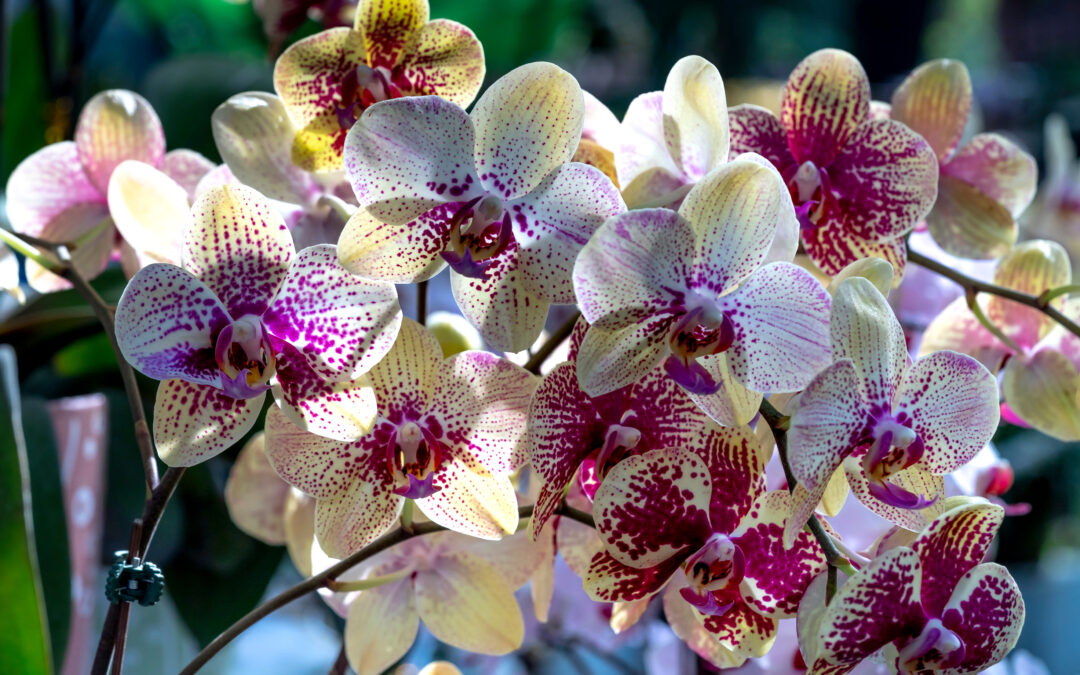Even though it’s barely started, you may find yourself getting a bit sick of winter. The damp, gray days contribute to cases of cabin fever and longing for the sight of some swelling buds. Either we need to take a tropical vacation or direct some of this untapped energy towards an indoor gardening project.
One of the most recognized flowering houseplants has to be the African Violet. Didn’t everyone’s grandmother have a couple of these growing on her kitchen windowsill? Modern hybrids have come a long way as breeders continue to extend the color range and select for symmetrical foliage growth. Blooms are larger and more prolific. There are miniature varieties, trailing forms and novelty cultivars with variegated foliage and speckled flowers. Violets are great subjects for plant collectors, and many clubs and societies exist, devoted solely to the culture and hybridizing of this old-fashioned bloomer.
African Violets belong to the Gesneriad family, which is a bountiful source of diverse blooming plants that can be successfully grown in the often-challenging home environment. Other members of this family include lipstick plants, goldfish vines, gloxinias and chiritas. None of these plants are foolproof, but with some extra care, you can bring all of these varieties into bloom and achieve some major garden bragging rights.
African Violets are classed in the genus Saintpaulus, named for Baron Walter von Saint Pail-Illaire, who sent seeds to his father, a German botanist. They hail from the foggy cloud forests of tropical Africa, so you must keep them out of cold winter drafts. Bright, indirect light is preferred.
Violets and their close relatives have fuzzy leaves while the lipstick vines have plump succulent foliage. All are subject to spotting from cold water. The solution to this is to water from the bottom. Wait until the soil surface feels dry to the touch. This is especially important in the winter when plants are not using as much water. Humidity is also an issue in the winter for this plant family. Levels of 40-50% will reward you with more flowers and healthier leaf growth. Raising the humidity is best accomplished by using a pebble tray under your plants that has a small amount of water in the bottom. Remember to clean the tray regularly to avoid fungal problems.
Another popular flowering plant is the moth orchid, Phalaenopsis, as they are easy to grow and the spectacular flowers last forever! The long, arching stems rise high above the leathery, paddle-shaped leaves and sport 8 to 10 blossoms in every color of the rainbow but blue. There are speckled patterns, interesting blotches and beautiful color bleeds.
Moth orchids grow in tropical climates and are epiphytic which means they grow on the surface of another plant, deriving moisture and nutrients from the atmosphere. Knowing this explains their care requirements. Moth orchids don’t like cold, they are often potted in a special bark medium and they have particular moisture needs.
Keep your orchids away from drafts and place them in bright, but indirect light. Exposure to full sun can burn the leaves. That special bark potting mix doesn’t contain any nutrients and my guess is that your home doesn’t resemble a rain forest, so be sure to put your plants on an every other week fertilizing schedule. We like to use the water soluble products. And a quick word about watering. Please don’t use ice cubes! Once a week, place your orchids in the sink and soak the bark with room temperature water for 10 minutes. Then drain them thoroughly. If those exposed aerial roots turn white or the leaves begin to wrinkle, it’s time to water! Yellowing leaves are an indicator of over-watering.
If you find yourself bitten by the collecting bug, consider joining a plant specific garden club this year. There are many that meet in the Madison area. You can get lots of valuable information from other members. It’s a great way to learn from the ground up if you’re a novice, and a wonderful way to share your knowledge and passion if you’re an expert. Besides, we gardeners are a fun bunch to hang out with.

